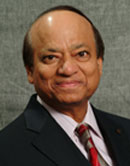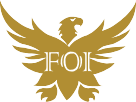
Q&A with Dr. Thubrikar of Thubrikar Aortic Valve, Inc.
Founder & President
Principal Series:
Thubrikar Aortic Valve, Inc. is a clinical-stage medical device company headquartered in Norristown, PA and has developed a more durable valve and delivery catheter for Transcatheter Aortic Valve Implantation (TAVI, aka TAVR). Since 2007, TAVR has revolutionized heart valve replacement by eliminating the need for open-heart surgery in many older patients with Aortic Stenosis (AS). The Company’s Optimum Transcatheter Aortic Valve (Optimum TAV) is designed on the principles of the natural aortic valve and has more durability than other TAVR valves. The company’s focus is to enable even younger patients, who comprise the majority of AS patients, to receive TAVR.
Join us for a private Family Office Insights Webinar/Teleconference featuring Thubrikar Aortic Valve, Inc.
October 5th at 2:15 PM Eastern
RSVP & CONFIRMATION REQUIRED HERE
Investors Only Please

Family Office Insights is a voluntary, “opt-in” collaborative peer-to-peer community of single family offices, qualified investors and institutional investors. Join the community here www.familyofficeinsights.com
Why is the Optimum TAV heart valve the biggest threat to incumbent TAVR device companies?
Our valve is significantly more durable. TAVR is the biggest revolution in valve replacement procedures because it eliminates the need for open-heart surgery. It is similar to the revolution of coronary artery stents, which eliminated the need for bypass surgeries. TAVR has become the standard of care for Surgery-Ineligible and High-Risk patients and the $5 Billion market for TAVs is expected to exceed $10 Billion.
However, the majority of patients are Medium- and Low-Risk patients, and are younger, so TAVR companies must prove that their valve has significantly more durability. Obviously, since most major TAVR companies also sell surgical valves, they could show that the durability of their TAVR valve is similar to that of their surgical valves. However, none of the companies have done so, and they are stuck. Ours is the only company claiming to have a valve with durability similar to - or better than - a surgical valve, which poses the biggest threat to incumbent TAVR companies.
How can one prove increased durability without long-term clinical data?
When surgical heart valves were introduced in the 1960’s, they would start to fail at 5-6 years, mostly due to valvular calcification. When improvements were implemented, no one could wait for 10 years of clinical data to know if the valve durability was improved. Valve performance in young sheep at 5 months became a standard model, because the valve calcifies much faster in young sheep and the result can be extrapolated to young patients. As anti-calcification treatments for bioprosthetic valves began to evolve, the sheep model was used routinely and valves showing less calcification in sheep would be accepted as more durable for patients. In other words, the degree of calcification in sheep is used as the gold standard for comparing valve durability - rather than long-term clinical data. Our Optimum TAVI valve shows similar - and possibly less - calcification than a popular surgical valve in sheep, and thus we claim increased durability.
Can competitors make a durable TAVI valve?
Not easily and not without infringing on our patent, we believe. If they could, they would already have done so. Edwards Lifesciences, the leader in heart valves, discontinued their self-expanding valve just last year, and in the majority of cases TAVR companies have not developed original products. Developing a new valve is an incredibly involved endeavor requiring many years of research and several million dollars because it is a highly specialized and regulated product. Hence, the large medical device corporations have acquired other companies rather than develop their own valve.

Dr. Thubrikar of Thubrikar Aortic Valve, Inc.
For over 30 years, Dr. Thubrikar has been a leading authority on the aortic valve. From 2007 to 2010, Dr. Thubrikar served as Director of the Biomedical Engineering Program and Professor of Mechanical Engineering at the South Dakota School of Mines and Technology. Previously, Dr. Thubrikar served as Edwards Distinguished Research Scientist at Edwards Lifesciences Corp.; as Director of Biomedical Engineering at the Heineman Medical Research Center at Carolina’s Medical Center with a joint appointment at the University of North Carolina; and as Director of Surgical Research in the Department of Surgery at the University of Virginia Health Sciences Center.
Dr. Thubrikar authored 2 of the leading textbooks in cardiovascular studies: The Aortic Valve and Vascular Mechanics and Pathology. The Aortic Valve is an indispensable guide to those designing bioprosthetic heart valves.
He has also authored over 100 publications and numerous book chapters on cardiac pathophysiology and devices, and is a Fellow of the American Heart Association (AHA). Dr. Thubrikar has been on the editorial advisory boards of several prestigious journals and served as a consultant to many multinational, cardiovascular device companies.
Dr. Thubrikar has received research support from the National Institute of Health (NIH), the AHA, and the private sector, and has served as a reviewer for research grants at the NIH, the AHA, and the National Science Foundation. He has been an invited speaker at several international symposiums.
Dr. Thubrikar holds a Ph.D. in Biomedical Engineering and an M.S. in Materials Science Engineering from New York University, and a B.E. in Metallurgical Engineering from Nagpur University, India.
Dr. Thubrikar was a scientist and a professor in the Hospital/University system and had planned to eventually retire after a 30+ year career in academia. However, the publication of his book “The Aortic Valve” prompted a 37-year-old heart valve patient’s mother to call him around 2003-04. She had read about the lack of durability of replacement valves and asked Dr. Thubrikar why someone with his specialized knowledge did not make a heart valve her son could use. Dr. Thubrikar joined Edwards Lifesciences in December 2004 with that intention, but then returned to academia to fulfil his goal. He developed Optimum TAV at the South Dakota School of Mines & Technology, and subsequently formed our Company to take the valve to clinical use.
Contact Dr. Thubrikar: Mano.Thubrikar@tavi.us

